Sheridan students help build school for aboriginal community
STORY BY MEHREEN SHAHID
Planks, straw bales, boards, insulation material, windows and doors stuffed in a truck and being hauled more than 2,000 kilometres across Canada sounds like a scene right out of a reality TV show.
But it’s more reality than show.
Kitchenuhmaykoosib Inninuwug is a First Nations community near Big Trout Lake in Northern Ontario, with a population of slightly more than 1,200 residents, 260 of which are school-aged children.
But the one school they have doesn’t fulfill their needs.
“Lack of classrooms, and the schedule, demands that kids travel in from various distances,” says Michael Muller, a professor in Sheridan’s Architectural Technology program. “It may not be great distances, but there is no transit, and there may not be someone to take you.”
Among other problems the community faces, major issues include unavailability of clean drinking water, health-related problems and more. But all is not lost, because the youth of KI see hope in the rest of Canada.
Last summer, Muller’s wife showed him a call to action put out by the community’s youngsters, inviting people from all over Canada to visit their reserve and see for themselves how they live and why they love being there.
“The youth organized where people would stay,” explains Muller. “They got the school authority to loan them the bus for tourist activities. And with the help of Porter and the local airline, and various other funders, they were able to support the costs of flying my wife and me up there.”
Seeing the welcome he and his wife got at KI, Muller knew it was a great opportunity for Sheridan to promote its involvement in the community.
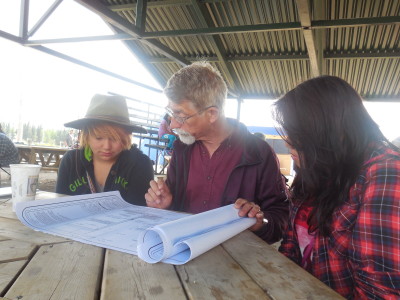
Michael Muller interacted with the youth of KI and learned more about their culture (Photos Courtesy of Michael Muller)
According to Muller, what Sheridan could contribute toward, was “dedicated space for teaching the high school program in the form of additional classrooms. Students took the information I brought back and used Google Earth images of the school to come up with designs.”
Second-year Architectural Technology student Vinny Loução was approached by Muller to help with the project. Loução, who is also president of the architectural club at Sheridan, invited other students to pitch in.
“We met up with Mike as a group of seven, and we did some research into the background of KI,” he says.
“We had to consider the weather and snow,” says Loução, explaining the process. “They can get three feet of snow on the roof and temperatures as low as -50 C without wind chill. We had to come up with a structure that could withstand those severe conditions.”
Other factors to consider with such extreme weather conditions include digging deeper to lay foundations, doubling insulation as well as using a different kind of material to ensure the building remains heated during winter and cool during summer.
MORE RELATED TO THIS:
“We’re using straw bale instead of the conventional insulation,” says Loução. “That will extend its life. Straw bale is also fire resistant. It is easy to build as a portable and easy to move around.”
Because KI is only accessible by land for three months a year, and construction usually cannot take place on site, a “portable” has to be used instead. The proposed six rooms will be constructed in Ontario, then taken apart, stuffed in trucks and transported to KI, where they will be reassembled.
Now that Sheridan students have submitted the designs, the next step is to seek approval from KI.
“It is their home, their [First] Nation. It is up to them as to how, or even whether, they use any expertise we offer,” says Muller.
He says that if enough funds are raised with the help of Third World Canada, an advocacy centre highlighting Canada’s northern regions, and all goes as planned, “In summer, foundations would be installed and the units slid into place. Then the electrical and plumbing connections and, hopefully, it would open in September 2016 for the first graduating class in 2017.”
To cut back on the cost of transporting material to the north, Muller “would like to research and use local materials such as clay soil and black spruce for structure and cladding.”
Paula Laing, transition adviser for the Aboriginal Initiatives Office at Sheridan, says she suggested to the college that projects such as this be made into credit courses where film students would go to a community and document their lives.
“Those [KI] students turned the tables on the rest of Canada and said, ‘Here we are, and we live here, and you can come here and experience what it is like to live here,’ ” she says.
For her, it’s about empowering the youth of KI. For Loução, it’s more than just a professional growth and making connections.
“When I came to Canada four years ago, everyone was so nice and welcoming, and now it’s time for me to give back.”




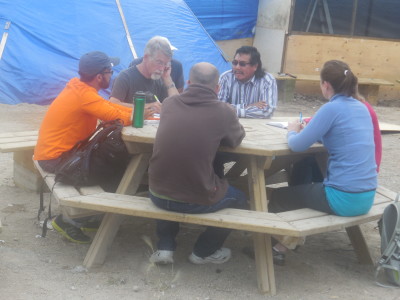
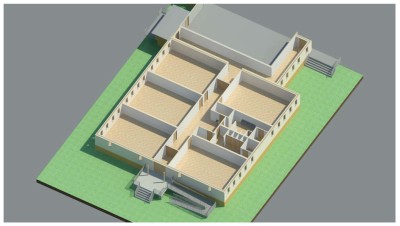
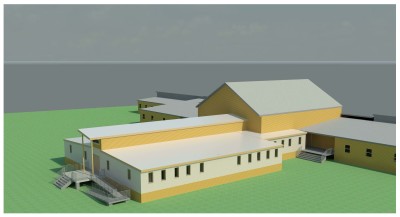
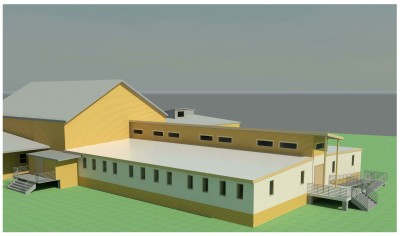

2 Responses to Sheridan students help build school for aboriginal community